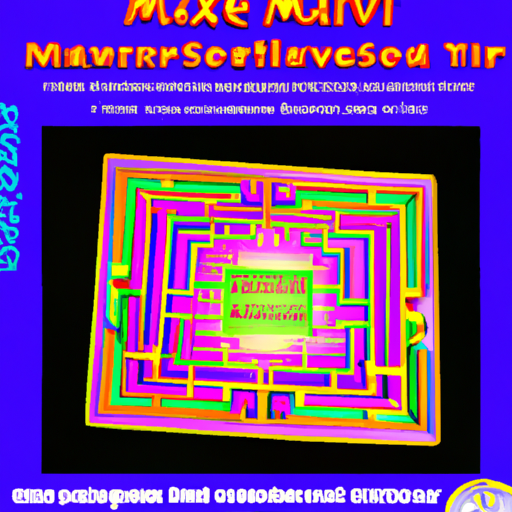Imagine if playing with maze toys could not only be a fun and challenging activity, but also have a positive impact on your spatial awareness. A recent study conducted explored this very question, and the results were fascinating. By engaging in problem-solving activities like navigating through a maze, individuals were able to sharpen their spatial awareness skills. So, next time you find yourself captivated by that intricate labyrinth, remember that it could be doing wonders for your spatial cognition.
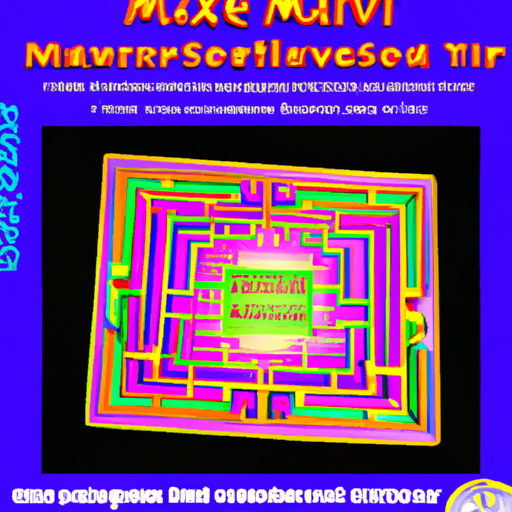
Benefits of Spatial Awareness
Understanding Spatial Awareness
Spatial awareness refers to the ability to perceive and understand the relationship of objects in space. It involves recognizing and interpreting the position, distance, and movement of objects around us. Having good spatial awareness is important in many aspects of life, including navigating through physical environments, participating in sports activities, and even in academic pursuits such as mathematics and science.
Importance of Spatial Awareness
Spatial awareness plays a crucial role in our daily lives. It helps us to navigate through our environment and avoid obstacles, judge distances accurately, and manipulate objects effectively. Without spatial awareness, simple tasks like pouring a glass of water or driving a car would be challenging. In children, the development of spatial awareness is particularly important as it directly influences their ability to learn and interact with the world around them.
Factors Affecting Spatial Awareness
Several factors can influence an individual’s spatial awareness. One significant factor is the level of sensory input and stimulation received during early childhood. Experiences such as engaging in physical play, exploring the environment, and interacting with toys and objects can all contribute to the development of spatial awareness. Additionally, individual differences in cognitive abilities, such as attention and memory, can also impact spatial awareness skills.
What Are Maze Toys?
Definition of Maze Toys
Maze toys are interactive playthings designed to challenge and develop a child’s spatial awareness and problem-solving skills. These toys usually consist of a three-dimensional structure with multiple pathways, obstacles, and traps. The objective of maze toys is to guide a small object, often a ball, through the labyrinthine paths by manipulating the toy or tilting it strategically. Maze toys can come in various sizes and complexities, catering to different age groups and skill levels.
Types of Maze Toys
There is a wide variety of maze toys available in the market, each offering a unique set of challenges and features. Some maze toys feature transparent walls, allowing children to see the path ahead, while others may have opaque walls, requiring them to rely on their spatial awareness and problem-solving abilities. Popular types of maze toys include handheld maze puzzles, ball-in-a-maze puzzles, tilt maze games, and larger tabletop or floor-standing mazes.
How Maze Toys Work
Maze toys operate on the principle of spatial manipulation and strategic thinking. Players must analyze the layout of the maze, assess the available pathways, and plan their moves accordingly. By tilting, rotating, or maneuvering the maze toy, children can guide the object through the maze, avoiding dead ends and dead-ends. Through trial and error, they learn to understand the spatial relationships within the maze, honing their spatial awareness as they progress.
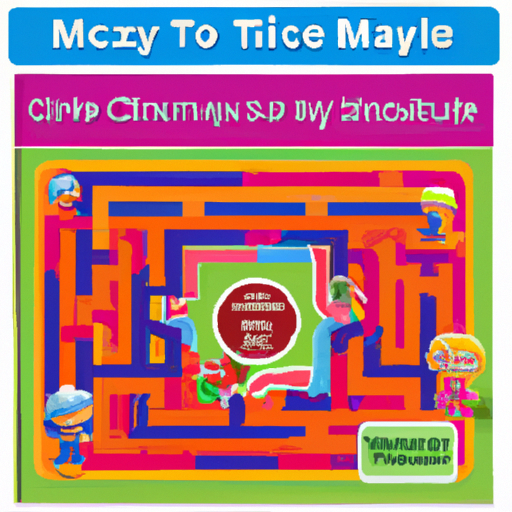
Development of Spatial Awareness in Children
Spatial Awareness in Infants
Spatial awareness begins to develop in the early stages of infancy. Infants initially focus on establishing their own body’s spatial relationship with the environment, gradually extending this awareness to objects and people around them. They learn to differentiate between near and far, explore different textures and sizes, and develop a basic understanding of spatial concepts such as in, out, up, and down.
Spatial Awareness in Toddlers
As children transition into the toddler stage, their spatial awareness continues to evolve. They become more skilled at navigating through their immediate surroundings, climbing, crawling, and walking with greater confidence. Toddlers begin to understand directional concepts such as left, right, forward, and backward. They also start to show interest in puzzles and manipulating objects, further developing their spatial reasoning abilities.
Spatial Awareness in Preschoolers
Preschoolers exhibit more complex spatial awareness skills. They can interpret and describe the spatial relationships between objects, understand basic map representations, and make simple mental rotations. As they engage in play and structured activities, preschoolers refine their understanding of concepts like size, shape, and orientation. Their ability to solve spatial problems and handle more intricate maze toys improves significantly during this stage.
Challenges in Developing Spatial Awareness
While most children develop spatial awareness naturally through everyday experiences and activities, some may face challenges in this area. Certain conditions, such as developmental disorders or sensory processing issues, can hinder the development of spatial awareness skills. In such cases, specialized interventions and targeted play activities can help support and enhance the child’s spatial awareness abilities.
Enhancing Spatial Awareness through Play
Play as a Learning Tool
Play is a natural and effective way for children to learn and develop essential skills, including spatial awareness. When engaged in play, children are motivated, actively involved, and can experiment with different strategies and problem-solving techniques. Play also provides opportunities for hands-on exploration and discovery, allowing children to make connections between objects, space, and their own actions.
Toys and Spatial Awareness
Toys play a crucial role in providing the necessary stimuli and experiences for the development of spatial awareness. Certain toys are specifically designed to enhance spatial awareness skills by engaging children in activities that require them to manipulate objects, understand spatial relationships, and solve problems. Maze toys, in particular, offer a unique combination of challenges that can effectively stimulate and develop spatial awareness in children.
Benefits of Maze Toys
Playing with maze toys offers several benefits for the development of spatial awareness. Firstly, maze toys require children to visualize and mentally map out the paths within the maze, enhancing their ability to navigate through complex and unfamiliar environments. Secondly, maze toys promote problem-solving skills as children strategize and analyze the different pathways to successfully guide the object through the maze. Lastly, maze toys encourage the development of fine motor skills and hand-eye coordination as children manipulate the toy to control the object’s movement.
Skills Developed through Maze Toy Play
Engaging in maze toy play can contribute to the development of various skills in children. By playing with maze toys, children can improve their spatial reasoning, visual perception, critical thinking, and problem-solving abilities. They learn to think ahead, plan their moves, and apply trial and error strategies to overcome challenges. Furthermore, maze toy play fosters patience, persistence, and the ability to adapt and adjust strategies based on feedback and outcomes.

Research on Maze Toys and Spatial Awareness
Studies on Maze Toys and Spatial Awareness
Researchers have conducted studies to explore the impact of maze toy play on spatial awareness skills. These studies often involve observing and measuring children’s performance on maze toy tasks and assessing their spatial awareness abilities before and after playing with maze toys. The aim is to determine whether there is a significant improvement in spatial awareness as a result of maze toy engagement.
Positive Findings
Several studies have reported positive findings regarding the relationship between maze toy play and the development of spatial awareness. These studies have shown that children who regularly engage in maze toy play exhibit better spatial reasoning skills, improved problem-solving abilities, and enhanced visual-spatial perception compared to those who do not engage in such play activities. These findings suggest that maze toy play can have a positive impact on spatial awareness development.
Negative Findings
While the majority of studies have highlighted the benefits of maze toy play, some studies have reported conflicting or inconclusive results. These negative findings may be attributed to various factors such as individual differences in children’s abilities, variations in the design and complexity of maze toys used in different studies, and limitations in the research methodologies employed. Further research is needed to better understand these discrepancies and address potential confounding variables.
Inconclusive Results
Despite the positive findings in many studies, it is important to note that some research on maze toys and spatial awareness has produced inconclusive results. This may be due to the complexity of spatial awareness as a cognitive skill that is influenced by various factors, both within and outside the realm of maze toy play. Additionally, the duration and intensity of maze toy engagement, as well as individual differences in children’s learning styles, may contribute to the variability in research outcomes.
Limitations of Existing Research
The existing research on maze toys and spatial awareness has some limitations that need to be acknowledged. Many studies have focused on a specific age group or population, limiting the generalizability of the findings. Moreover, the majority of research has relied on self-reported measures or researcher observations, which may introduce biases and inaccuracies. Future research should consider using more objective and standardized assessments to provide a clearer understanding of the relationship between maze toys and spatial awareness.
Practical Applications of Maze Toys
Incorporating Maze Toys in Early Education
Maze toys can be valuable tools in early education settings. Teachers and educators can incorporate maze toys into their curriculum to enhance children’s spatial awareness abilities. By incorporating maze toys into classroom activities, educators can provide hands-on learning experiences that promote problem-solving, critical thinking, and spatial reasoning in a fun and engaging way. Maze toys can be used as part of structured lessons, independent exploration activities, or group challenges, allowing children to apply and practice their spatial awareness skills in various contexts.
Therapeutic Use of Maze Toys
Maze toys also have therapeutic applications in occupational therapy and rehabilitation settings. Occupational therapists often use maze toys as part of a therapeutic intervention to improve spatial awareness and coordination in individuals with developmental delays, neurological conditions, or physical disabilities. The interactive nature of maze toys can motivate and engage individuals in therapeutic activities, challenging them to improve their spatial awareness, hand-eye coordination, and fine motor skills in a supportive and enjoyable environment.
Spatial Awareness Training and Maze Toys
Spatial awareness training programs, which aim to enhance spatial awareness skills, can include the use of maze toys as a practical and effective tool. These programs can be implemented in school settings, community centers, or specialized training facilities. By incorporating maze toys into the training regime, participants can engage in guided activities and exercises that progressively develop their spatial awareness abilities. The structured nature of these programs allows for continuous practice and improvement, enabling individuals to apply their enhanced spatial awareness skills in real-life situations.
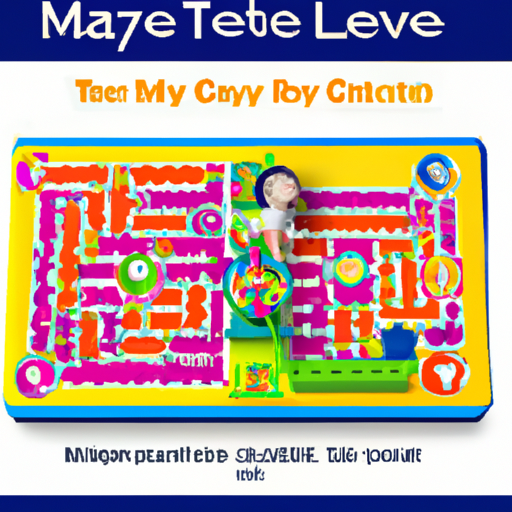
Tips for Choosing and Using Maze Toys
Age Appropriate Toys
When selecting maze toys, it is important to consider the age appropriateness of the toy. Maze toys come in various designs and complexities, and choosing a toy that matches the child’s age and skill level is crucial. Toys that are too simple may not provide enough challenge, while toys that are too complex may frustrate and discourage young children. Reading product descriptions and age recommendations can help guide in selecting age-appropriate maze toys.
Consideration of Skill Levels
In addition to age appropriateness, considering the child’s skill level is important when choosing maze toys. Some maze toys are specifically designed for beginners, while others are more suitable for advanced users. Assessing the child’s current spatial awareness abilities can help determine the appropriate level of challenge. Starting with simpler maze toys and gradually progressing to more complex ones allows for gradual skill development and keeps children engaged and motivated.
Safety Measures
Safety should always be a priority when using maze toys. Before purchasing or using maze toys, inspect them for any small parts that may pose a choking hazard, sharp edges, or potential safety risks. Choose maze toys made of non-toxic materials and ensure they meet safety standards. When playing with maze toys, supervise young children to prevent accidents or misuse. Additionally, encourage children to play in a safe environment and teach them proper handling and care of the toys to minimize the risk of injuries.
Variety and Complexity
To keep children engaged and continuously challenge their spatial awareness skills, it is recommended to provide a variety of maze toys with different designs and levels of complexity. Exposing children to various maze toy layouts and features promotes adaptability and flexibility in their problem-solving strategies. Introducing new maze toys with increasing complexity allows children to progress at their own pace and ensures that they continue to develop and refine their spatial awareness abilities.
Supervision and Interaction
While maze toys can provide independent play opportunities, it is also important to encourage social interaction and supervision during play. Engaging in maze toy activities with others promotes cooperative play, communication, and shared problem-solving. It provides an opportunity for children to learn from each other, discuss strategies, and develop social skills alongside their spatial awareness abilities. Additionally, having a caregiver or adult present during play sessions ensures safety, guidance, and support when needed.
Other Activities to Improve Spatial Awareness
Puzzles and Board Games
Puzzles and board games are excellent activities to improve spatial awareness. They require children to analyze and manipulate puzzle pieces or game elements, developing their understanding of spatial relationships. Puzzles with varying levels of difficulty and board games that involve spatial reasoning and strategizing can provide engaging and challenging experiences for children to enhance their spatial awareness skills.
Building and Construction Toys
Building and construction toys, such as blocks, LEGO, or magnetic tiles, offer valuable opportunities for spatial awareness development. Children can explore concepts like balance, stability, and symmetry as they construct different structures. Building with these toys allows children to engage in hands-on experimentation, recognizing the effects of their actions on the physical world, and improving their spatial awareness through trial and error.
Outdoor Exploration
Outdoor exploration activities, such as hiking, biking, or nature walks, can provide children with rich experiences that enhance their spatial awareness. Navigating through unfamiliar terrains, interpreting maps, and recognizing landmarks require children to apply their spatial reasoning skills in real-life contexts. Outdoor exploration also offers opportunities for children to observe natural patterns, understand the relationship between objects and the environment, and develop a deeper appreciation for the world around them.
Artistic and Creative Endeavors
Engaging in artistic and creative endeavors, such as drawing, painting, or sculpting, can also contribute to the development of spatial awareness skills. These activities require children to visually represent objects, scenes, or ideas in two or three dimensions. By experimenting with different mediums and materials, children learn to visualize and recreate spatial relationships, improving their ability to perceive and represent the world around them.
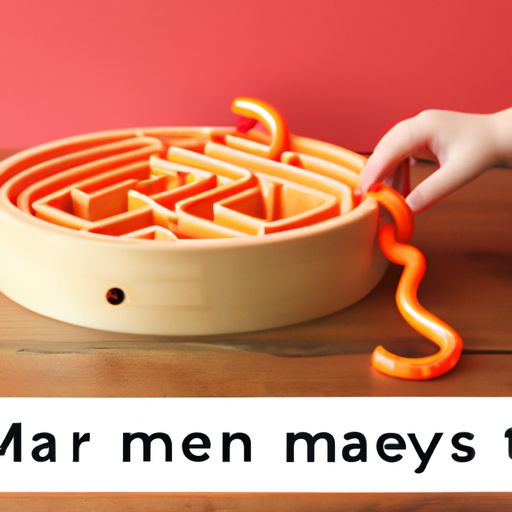
Spatial Awareness Development Beyond Childhood
Continual Development of Spatial Awareness
While spatial awareness skills develop significantly during childhood, it is important to recognize that spatial awareness continues to evolve throughout life. Continuing to engage in activities that challenge spatial reasoning, problem-solving, and navigation can help maintain and improve spatial awareness skills. By incorporating spatially demanding activities into daily routines, individuals can continue to sharpen their spatial awareness abilities and adapt to the spatial challenges they encounter in their personal and professional lives.
Spatial Awareness in Adulthood
Spatial awareness remains relevant in adulthood, as it influences various aspects of daily life. In professions such as architecture, engineering, and design, spatial awareness is crucial for effectively visualizing and manipulating structures and spaces. In sports and physical activities, spatial awareness helps individuals coordinate movements, anticipate opponents’ actions, and perform at optimal levels. Even in tasks as mundane as parking a car or organizing a room, spatial awareness plays a role in achieving desired outcomes efficiently.
Importance of Maintaining Spatial Awareness
Maintaining spatial awareness skills throughout adulthood is essential for maintaining independence, safety, and overall cognitive well-being. Research has shown that individuals with better spatial awareness tend to have improved cognitive functions, including memory, attention, and problem-solving abilities. By engaging in activities that challenge spatial awareness, individuals can continue to exercise and stimulate their brains, promoting healthy cognitive aging and reducing the risk of cognitive decline.
Conclusion
Playing with maze toys can indeed improve spatial awareness in children. These interactive playthings offer a fun and engaging way to develop spatial reasoning, problem-solving, and fine motor skills. The benefits of maze toy play go beyond just spatial awareness, extending to cognitive, social, and emotional development. By incorporating maze toys into early education, therapy, and training programs, we can harness the potential of these toys to enhance spatial awareness in individuals of all ages. So, the next time you come across a maze toy, don’t just see it as a source of entertainment, but also as a tool that can help develop and sharpen essential spatial awareness skills.

